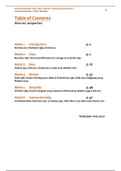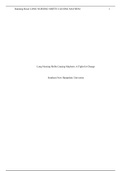Summary
Full Summary of Sociology, Intersectionalities: Class, Race, Gender & Sexuality (7332F004AY)
- Course
- Institution
GOT ME AN 8 ON THE EXAM! Full summary of Sociology course Intersectionalities: Class, Race, Gender & Sexuality (7332F004AY) as taught by Prof. Sarah Bracke, in English. Contents: WEEK 1 INTRODUCTION Kimmel, Michael S. (2017). Introduction: Toward a Sociology of the Subordinate. In: Michael S. K...
[Show more]






